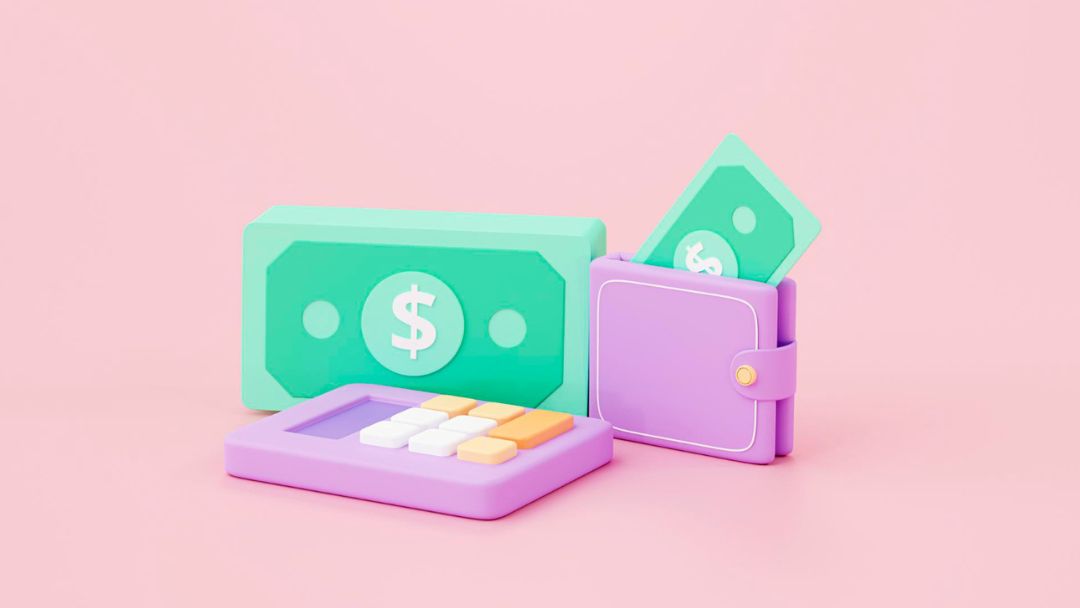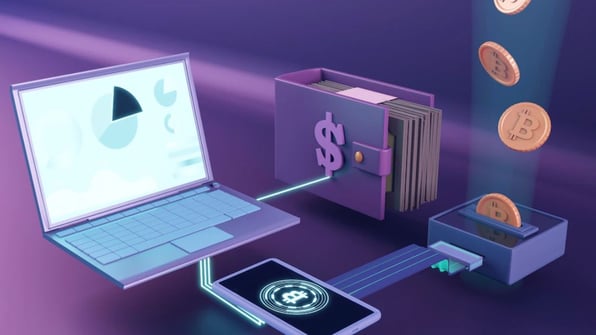Smartphones, tablets, laptops and smartwatches are part of today's everyday consumer. People can use these devices for many everyday tasks, such as checking email, accessing bank accounts and making purchases, both with and without a physical credit card.
E-wallets, also known as digital wallets or electronic wallets, are one of the fastest growing new means of payment in recent years.
New digital consumers are ditching conventional physical wallets in favour of digital wallets for their security and speed when it comes to making purchases.
But what are digital wallets and how exactly do they work? Keep reading so you don't miss anything.
What is a digital wallet?
Digital wallets are online payment tools, usually available in the form of an app. The wallet securely stores virtual versions of debit and credit cards, so you don't need to enter your card details or carry a physical card to make payments. You can also store digital tickets and e-vouchers there, so you always have the documents you need close at hand.
The main advantage is that all payment information is centrally stored in a single application. It protects users' information via passwords and encryption and allows them to pay or send money from their mobile in just a few clicks.
How does a digital wallet work?
Mobile devices and digital wallets currently use the following technologies:
- QR codes: Quick response codes are matrix bar codes that store data. To initiate a payment, you use your device's camera and the wallet's scanning system.
- Near field communication (NFC): NFC is a technology that uses electromagnetic signals to connect and transfer data between two smart devices. To connect, two devices must be within an inch and a half (4 centimetres) of each other.
- Magnetic secure transmission (MST): This is the same technology that magnetic card readers use to read your card when you swipe it through a slot at a point of sale. This encrypted field is generated by your phone and can be read by the point of sale.
Where can I normally use digital wallets?
There are different ways you can use your digital wallet:
In shops
You can use the digital wallet to pay wherever you see the Contactless Symbol by holding your phone over the symbol on the terminal.
Online
When shopping online, some websites allow you to select your digital wallet as a payment option instead of having to enter your credit card information each time you make a purchase.
In apps
Many apps allow you to use digital wallets to make payments for carpooling, morning coffee or home delivery services.
Automated Teller Machines (ATMs)
If you add your debit card to your digital wallet, you can withdraw cash or make deposits with your phone at selected ATMs. Simply select the debit card in your digital wallet and hold your phone over the contactless symbol at the relevant ATM.
What are the different types of digital wallets?
There are several types of e-wallets that serve different purposes depending on the nature of the business and the end-users. The following are the types of e-wallets that issuers offer to their end-users to perform specific tasks:
Closed wallet
- A closed wallet allows users to make payments through an application or website.
- They are typically created by companies that sell products or services to their customers.
- Users of a closed wallet can only use the funds stored in the wallet to complete a transaction with the wallet's issuer.
- When a transaction is cancelled or a refund is issued, the entire amount is saved in the wallet.
Semi-closed wallet
- A semi-closed wallet allows users to easily conduct transactions at the merchants and locations listed.
- The coverage area of semi-closed wallets is limited.
- Merchants must accept the contract or agreement with the issuer in order to accept payment from the wallet.
Open wallet
- Banks offer open wallets.
- Users who have open wallets can use them for any transaction.
- Open wallets make it simple to transfer funds.
- Payments can be made online or in-store at any time.
- The open wallet service provider allows users to send and receive money from anywhere in the world; however, both the sender and the recipient must have accounts on the same app.
Crypto wallet
- Cryptocurrency wallets store users' public and private keys.
- Keys could be cryptocurrency ownership certificates.
- Hardware wallets, also known as cold wallets, provide an additional layer of security and protection.
- Offline wallets can be operated using a USB stick.
- These wallets can be used to make cryptocurrency payments.
Top 5 digital wallets
There are many types of digital wallets and depending on each one, you will be asked for different data to store your cards. The decision really comes down to your needs, location and what type of smartphone you are using.
- PayPal
PayPal is the most popular e-wallet. According to Statista, it reached 361 million users in the third quarter of 2020.
The PayPal brand is familiar to most, as it has been operating since the late 1990s. It offers a wide range of options for its customers. It allows you to store cash balances in your PayPal account, and link cards and bank accounts. When making a purchase, the user only has to confirm his or her PayPal password and choose the source account for payment.
- Apple Pay
Apple Pay is an e-wallet available to Apple device owners. It works with iPhone, iPad, and any other device that runs on the iOS operating system.
The market share of iPhone is larger than that of Android, making Apple Pay a key payment method for online stores. Apple Pay is one of the most secure e-wallets today, as it uses Touch or Face ID to make payments. Shoppers can complete their payment by simply tapping the screen once or by showing their face.
- Google Pay
Google Pay is a mobile wallet that allows you to shop from an Android device (smartphone, tablet, smartwatch...) with an NFC chip. Google users set up their preferred payment methods, so they can use Google Pay for their purchases.
- Amazon Pay
Amazon Pay allows your users to pay with the bank details associated with their Amazon account. To be able to use Amazon Pay, the website where you want to make the purchase must have it integrated, in a similar way to what currently happens with PayPal. With this payment service, you can even buy in shops that are direct competitors of Amazon if they integrate the payment service, as well as in other websites such as clothing shops, concert tickets, airline websites, etc.
- Click to Pay
Click to Pay is a fast and secure one-click payment solution promoted by the major card networks, including Visa and Mastercard. With this digital wallet, shoppers can enter their Click to Pay payment information on the checkout page. They only have to add their card details in the app or website once, and the details will be tokenised so that the ‘Click to Pay’ button will always appear in the future. Click to Pay has huge benefits, as it enables frictionless transactions for consumers and avoids cart abandonment, leading to a better conversion rate for ecommerce platforms.
Conclusions
Online banking is here, and we can safely say it is not going anywhere. The biggest benefit of an e-wallet is the simplification of the payment process.
Do you want to be able to pay with your mobile phone wherever and whenever you want? RIZEAPP is the perfect tool to make seamless payments.
- Manage in-app cards with just a tap
- Connect your card to tap and pay with your phone
- Get instant payment notifications
RIZEAPP puts you in control of your finances.




